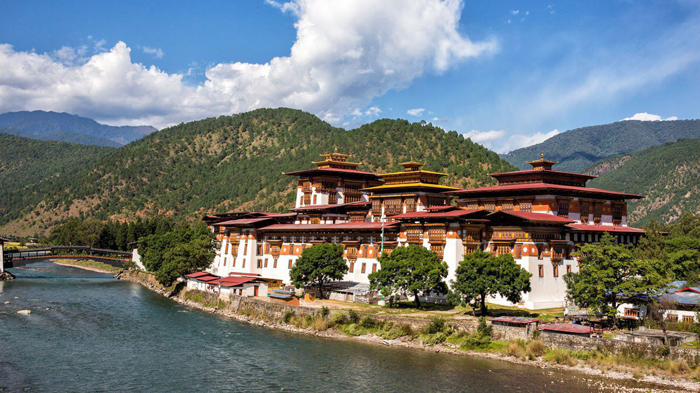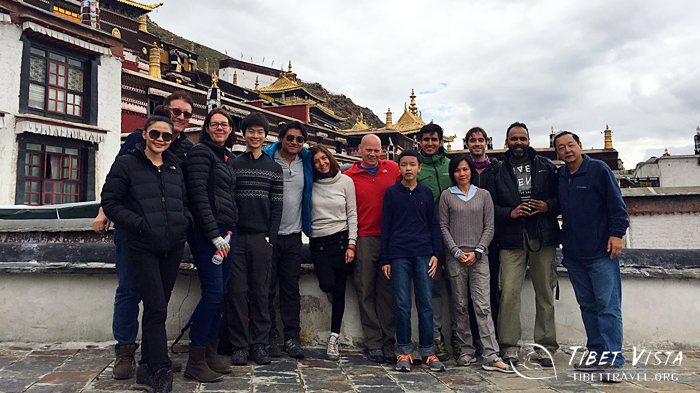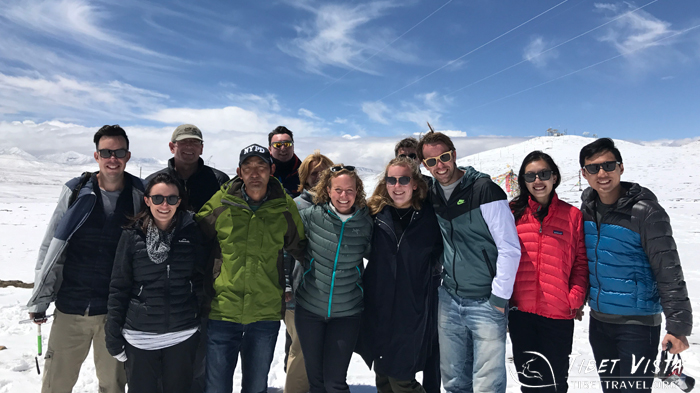
How to Plan a Classic India Nepal Tibet Bhutan Tour?
An exotic journey that explores the lands, religions, and cultures of the four Himalayan gems, India, Nepal, Tibet, and Bhutan, a tour of these four places is the trip of a lifetime for any traveler. However, the big question for anyone planning a tour to India, Bhutan, Nepal, and Tibet, is where to go in each place. With thousands of different things to see and do across four separate regions of the Himalayas, the choices are so vast it can be very confusing to know where to head first. No worries. Our travel experts show you how to map out the Classic India Nepal Tibet Bhutan Tour for different options.
How to Plan the Classic Classic India Nepal Tibet Bhutan Tour
Focus on the Golden Triangle Route in India
The Golden Triangle route in India is the best option for first-time travelers, as it covers the most important and impressive sites in one small area, and India is a vast country to travel around. Starting with Delhi, there are a huge number of places to visit, including the stunning Old Delhi, an ancient marketplace that dates back around 400 years. In Agra, the second part of the Golden Triangle, the most popular monument in India lies, the Taj Mahal, built as a memorial to the wife of the Shah Jahan. Jaipur, known as the Pink City, is the third part of this Golden Triangle, where parts of the old city still retain the pink paint that was used to paint the entire city for the visit of the British Prince of Wales in 1876.
 Golden Triangle Route in India
Golden Triangle Route in India
Enjoy Sightseeing from Kathmandu to Pokhara
The route from Kathmandu to Pokhara in Nepal is the most popular route in the country, and includes the highlights of the Nepali capital such as Swayambhunath, Pashupatinath, and Bouddhanath, before moving out of the capital towards Pokhara. Pokhara is the other end of this touring route, and is known as the city on the lake, lying as it does right on the shores of Lake Phewa. One of the most unique attractions in the city is the Davis Falls, a unique waterfall that drops from a great height into a narrow tunnel that is believed to have no end. Near the falls is one of the most devout and revered shrines in Pokhara, the Shiva Caves, dedicated to Lord Shiva, the father of the Hindu deities.
Travel from Lhasa to EBC in Tibet
Traveling through Tibet, there is no better route to take than the tour from Lhasa, the Tibetan capital, to the stunning site of Mount Everest Base Camp, at the foot of the world’s highest mountain, in western Tibet. Starting in the capital city of Tibet, Lhasa, the tour begins with the Potala Palace, on its high hill overlooking the city, and the sacred Jokhang temple, the beating heart of Tibetan Buddhism and home to one of the world’s oldest statues of Buddha.
Outside the Lhasa city, you travel through the town of Gyantse, where you get to visit the Kumbum Stupa and the ancient city of Shigatse, the second city of Tibet and home to the seat of the Panchen Lama, Tashilhunpo Monastery. Sitting at an altitude of 5,200 meters, EBC in Tibet is the first of the two base camps that were set up to cater to the mountaineers of the early 1920s. The base camp can be easily reached by car, thanks to the road that runs almost right to the site, and is one of the best places from which to get a great view of the summit of the world’s highest mountain.
Explore Bhutan from Paro to Thimphu and Punakha
The last Himalayan kingdom and the last true Shangri-La in Asia, Bhutan is one of the most unique destinations for any tour. The classic route in Bhutan runs from Thimphu, the nation’s capital, to Punakha, the ancient capital of Bhutan, and then back to visit Paro, the entry city to Bhutan, with the only international airport in the kingdom.
Thimphu is filled with ancient wonders, lying alongside its modern buildings, and some of the top places to see include the National Memorial Chorten, the Drubthob Nunnery, and the Thimphu Dzong. Punakha, the former capital of this ancient kingdom, is home to the Chimi Lhakhang, a fertility temple that was built by the lama, Drukpa Kunley, in 1499.
 Punakha Dzong
Punakha Dzong
Punakha Dzong is one of the most impressive monasteries in Bhutan, with three towers that stand high over the main buildings. While Paro was the place where you first entered Bhutan, it is also often the last place to visit, and the trip from Punakha to Paro is one of stunning natural beauty as you wind your way along the narrow roads of the valleys to the Paro Valley. The most amazing sight in the valley is the Taktsang Monastery, also known as the Tiger’s Nest Monastery, which lies 900 meters off the valley floor, on a small ledge in the cliff face. It is a good 45-minute trek up the side of the cliff, and the view from the monastery over the Paro Valley is one of the most amazing in the kingdom.
How to Combine the 4 Classic Travel Routes in a Long Tour
Combining a tour of India, Nepal, Bhutan, and Tibet is a huge adventure, and one that will leave you breathless. The best way to travel between the four places is by flight, and inside each location, there are varying ways to travel. For India, the best way to get around is by train, as the country has a vast network of railways that are the main means of transport by locals and tourists alike. In Nepal, local buses can be used for many trips, or you can hire a car and driver for a reasonable amount to take you from place to place. In Bhutan and Tibet, however, independent travel is not permitted, and your transportation is provided by the tour operator that manages your tour, a requirement in both places.
What Travel Documents Are Needed for Classic India Nepal Tibet Bhutan Tour?
For India, you will need to have a visa from a diplomatic mission or embassy for entry into the country, Visas can also be applied for online as an E-visa, which around two-thirds of the countries in the world can use. Only Japan and South Korea have the option of getting a Visa on Arrival. However, there are no other documentary requirements, and obtaining the visa only takes three working days.
For Nepal, a visa can be obtained on arrival, and is a simple process that takes less than an hour at all points of entry. There are also no other documents required for Nepal. For Tibet, you need to book your Tibet tour with a Tibet travel agency and then get your Chinese Visa first and use it to apply for Tibet Permit, which is the most important permit for Tibet Entry. While if you decide to enter Tibet from Nepal, you’ve got to have China Group Visa and Tibet Travel Permit. To do so, you have to submit your passport information to your travel agent to apply for Tibet Permit on your behalf and reach Kathmandu with 3 days to get China Group Visa before entering Tibet from Nepal. In addition, if you plan to visit EBC in Tibet, additional permits like Alien’ travel permit and frontier pass are also needed. However, you don’t have to worry about getting them, sine your Tibetan guide will help you handle them after you land in Lhasa.
 Enter one of the most important documents in Tibet - Tibet Permit
Enter one of the most important documents in Tibet - Tibet Permit
For Bhutan, the process is even more complex, though it is all handled by the tour operator once you have booked your tour of the kingdom. The tour operator applies for your visa with the Bhutan Tourism Council, and a letter of approval is sent to you and the airlines, which is required to book the flights to the kingdom. Once you arrive in Paro, the immigration officials will issue your visa based on the letter of approval you received, and will also issue the travel permits for areas within the kingdom as listed on your itinerary, which was approved when your visa was applied for. Without all of this, you cannot even book the flight to Bhutan or try to enter the kingdom overland, as tourism in Bhutan is strictly controlled.
How to Time Your Visit in India Nepal Tibet Bhutan Tour?
For a tour of this magnitude, timing is everything, and getting the right time of year for all of the places at the same time is hard. Climates in the four places are very different, and the best times for travel in India and Bhutan is the opposite of that in Nepal and Tibet. However, there is a crossover, where there is a window of opportunity to be able to get the ideal weather conditions for a tour to all four places at the same time. October to December or March to April is the best time to fit in all four places in one tour, giving you the ideal opportunity to be able to travel in all four places without heading into the wettest parts of the year in each country.
How to Budget Your Travel Cost?
Budgeting your cost for touring in India and Nepal is not too hard, since there are cheap places to stay and eat in both countries, as well as cheaper ways to travel around whilst there. Budget hostels exist in both India and Nepal, which can help to reduce the cost of accommodation, and often include kitchens where you can prepare your own food, instead of always eating out, which is cheaper. Travel in India and Nepal is also easy, as the trains in India, the main form of transport, are not expensive, and even taxis in Nepal can be cheap if you know how to bargain with the driver. Tuk-tuks are also a cheap way to get around, and can be found all over the cities of both India and Nepal.
 Small Group Tour in Tashilhunpo Monastery
Small Group Tour in Tashilhunpo Monastery
Tibet can be toured on a budget, and you can save on the total cost of a tour by joining a Small Group Tour, where you travel along with others with the same interests in a group instead of booking a private tour of the region. This helps reduce costs as several of the higher costs of the tours in Tibet are shared with the other members of the group, such as the cost of the tour guide, the driver, and the private vehicle, all of which are required in Tibet.
Bhutan, however, is another matter. The tourist requirements in Bhutan mean that there is a Minimum Daily Fee of around 250 US dollars per day for every tourist, which cannot be lowered. Limiting your time in the country is really the only way to reduce costs, though the daily price you pay does include everything from your hotel and meals to tour guide, driver, vehicle, and everything else you will need. The only thing it does not cover is personal expenses for things like alcohol and souvenirs.
When and How to Book the Long Tour?
A tour of all four places is something that cannot be done in a week or two, and really requires at least 3-4 weeks to cover all the attractions in India, Nepal, Bhutan, and Tibet. The best time to book is when you have an idea of where you want to travel within the four countries, and once you have decided on the best time to visit. Booking can be done with our professional advisors at any time, who will give you the best advice on where to travel and when to go, and will help to complete your itinerary of all four places.
What to Pack for the India Nepal Tibet Bhutan Tour?
Traveling to India, Nepal, Bhutan, and Tibet does mean that you may need to pack different things for the different places you will be visiting, depending on when you intend to visit. For most of the trip, you will not really need much in the way of warm weather clothing if you are not traveling during the winter months in Bhutan and Nepal. India is a country which is warm throughout the year, even in the northern areas of the country, which means warm clothing is also not needed.
 In a cold area of Tibet, you should bring warm clothes.
In a cold area of Tibet, you should bring warm clothes.
However, for Tibet, you will need some warm clothing, even in the summer months, as it can get cold at night. Temperatures in Tibet can get down to almost freezing in some parts of Tibet once the sun goes down, and you will need to have some warmer clothes, such as thermal underwear and warm jackets, even in the hottest parts of the year.
It is also a good idea to have a hat to keep the intense sun off your head in all four countries, especially in Tibet, as sunstroke can be debilitating on holiday. Sun cream and sunglasses will also help, and for those windy areas, a good lip balm can help keep your lips from getting dry and cracked.
While shorts may seem like a good idea where it is warmer, both Hindu and Buddhist religions frown on people wearing shorts in the temples and monasteries, and for women, clothes that cover the shoulders and legs are best. Low-cut tops are also taboo in all four places, so should be avoided in favor of tops with higher necklines and sleeves.
Conclusion
Traveling around the four countries is a huge adventure, and one that will last a lifetime. For India, the Golden Triangle is the best place to visit on a first-time trip, as is Kathmandu in Nepal, Thimphu and Paro in Bhutan, and Lhasa to Mount Everest in Tibet. If you are running on a budget, you may need to budget more in India and Nepal, as Tibet and Bhutan are limited on how much you can save on the trips.

I am a tour guide in Tibet an was Born in Kham Tibet, I am the father of 2 little girls, bachelor's degree. I have more than 7-years experience of being a tour guide in Tibet. I am a warm, friendly, knowledgeable and attractive guy.


.jpg)



0 Comment ON "How to Plan a Classic India Nepal Tibet Bhutan Tour? "